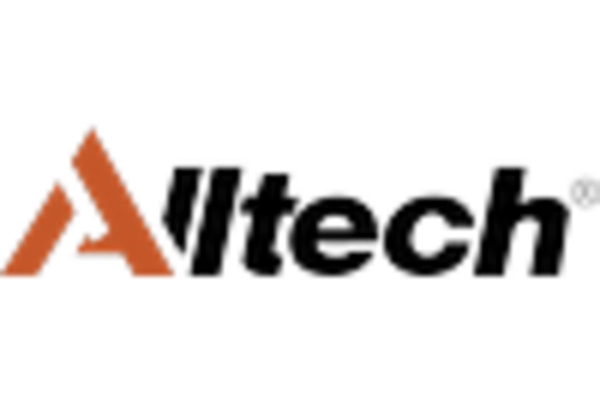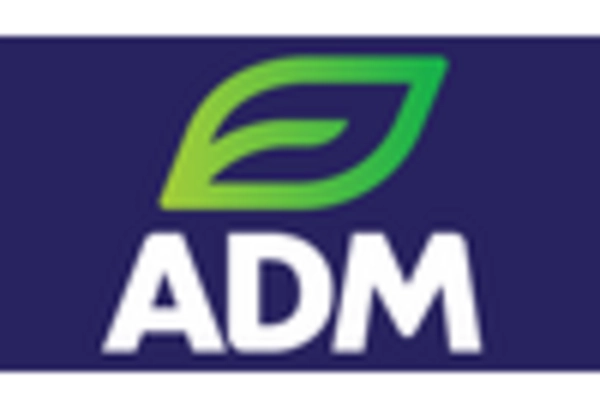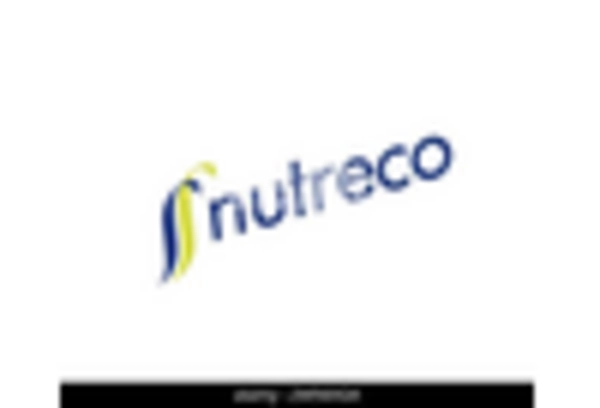Growth in Livestock Production
The growth in livestock production is a fundamental driver of the Animal Feed Dietary Fibers Market Market. As the global population continues to expand, the demand for animal protein is surging, leading to increased livestock farming activities. This growth necessitates the development of efficient feeding strategies, where dietary fibers play a crucial role. The incorporation of dietary fibers in animal feed is known to enhance feed efficiency and improve the overall health of livestock, thereby supporting higher production levels. Market data indicates that regions with rising meat consumption are particularly driving this trend, as producers seek to optimize their feed formulations to meet the growing demand for animal products.
Rising Awareness of Nutritional Benefits
The increasing awareness regarding the nutritional benefits of dietary fibers in animal feed is a pivotal driver for the Animal Feed Dietary Fibers Market Market. Livestock producers are becoming more cognizant of how dietary fibers can enhance digestion, improve gut health, and boost overall animal performance. This trend is reflected in the growing demand for high-fiber feed formulations, which are believed to contribute to better weight gain and feed efficiency. According to recent data, the inclusion of dietary fibers in animal diets has been linked to a reduction in feed costs, as animals require less feed to achieve optimal growth. Consequently, this awareness is likely to propel the market forward, as producers seek to optimize their feed strategies and improve the health of their livestock.
Regulatory Support for Sustainable Practices
Regulatory frameworks promoting sustainable agricultural practices are increasingly influencing the Animal Feed Dietary Fibers Market Market. Governments and regulatory bodies are advocating for the use of natural and sustainable feed ingredients, including dietary fibers, to reduce the environmental impact of livestock production. This regulatory support is encouraging feed manufacturers to innovate and incorporate more fiber-rich ingredients into their products. As a result, the market is witnessing a shift towards more sustainable feed solutions, which not only meet regulatory requirements but also appeal to environmentally conscious consumers. The potential for increased market share among companies that prioritize sustainability is significant, as the demand for eco-friendly products continues to rise.
Technological Innovations in Feed Production
Technological innovations in feed production are driving advancements in the Animal Feed Dietary Fibers Market Market. The development of new processing techniques and formulations allows for the efficient incorporation of dietary fibers into animal feed. These innovations enhance the digestibility and bioavailability of fibers, making them more effective in promoting animal health. Furthermore, advancements in feed formulation software and analytical tools enable producers to create customized feed solutions that meet specific nutritional requirements. As technology continues to evolve, it is likely that the market will see an increase in the adoption of fiber-rich feed products, which can lead to improved animal performance and overall productivity.
Consumer Preference for Healthier Animal Products
Consumer preferences are shifting towards healthier and more nutritious animal products, which is significantly impacting the Animal Feed Dietary Fibers Market Market. As consumers become more health-conscious, they are increasingly seeking meat and dairy products that are produced from animals fed with high-quality, fiber-rich diets. This trend is prompting livestock producers to reformulate their feed to include more dietary fibers, which are associated with improved animal health and product quality. The market is responding to this demand by developing innovative feed solutions that not only enhance the nutritional profile of animal products but also align with consumer expectations for health and wellness.

















Leave a Comment